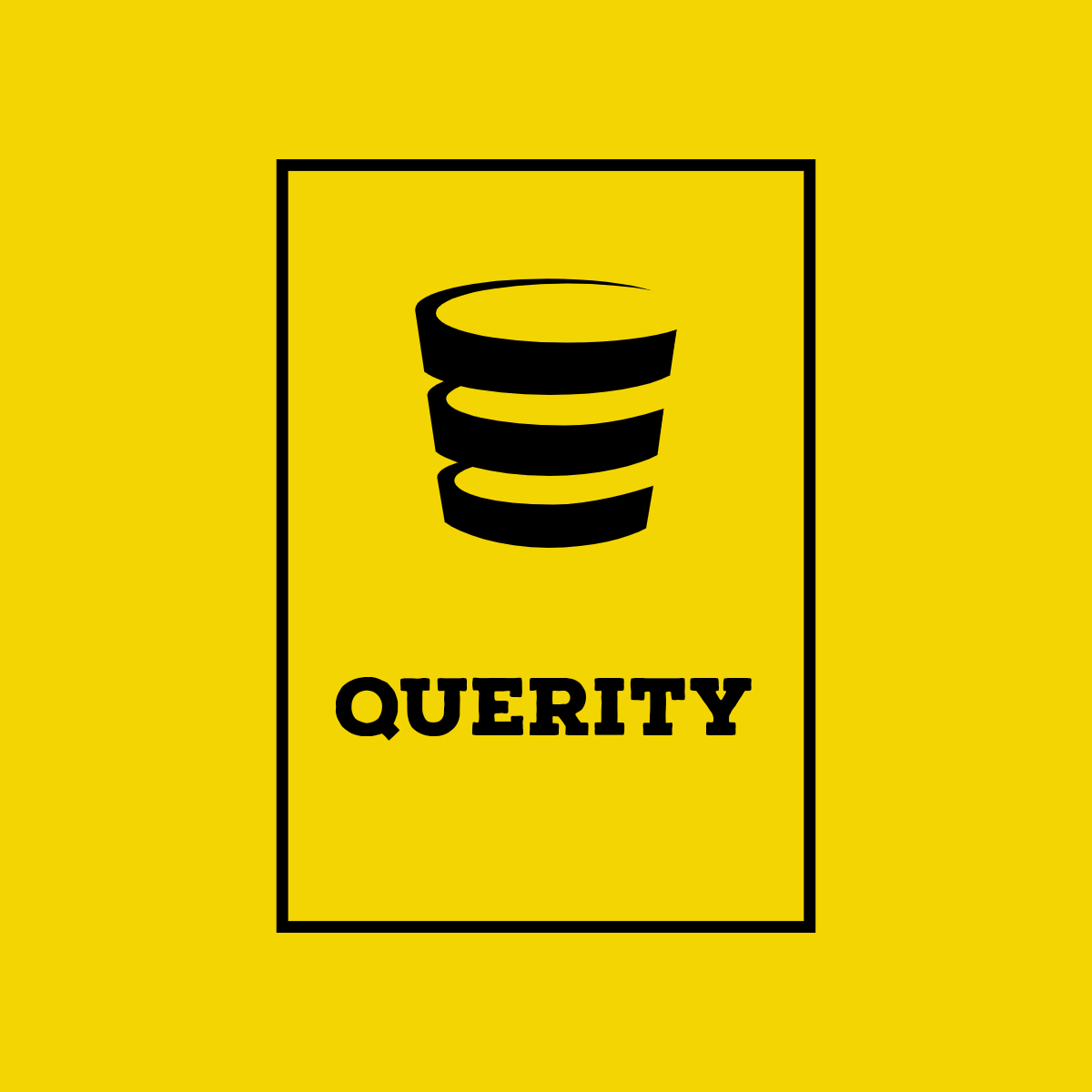Open-source Java query builder for SQL and NoSQL.
Querity is an extensible query builder to create and run database queries in your Java application.
It supports SQL and NoSQL databases technologies, and each support is built into small modules, so you can import the one which fits into your project.
Database support:
- any SQL database (with the JPA modules)
- MongoDB
- Elasticsearch
Query features:
- filtering
- sorting
- pagination
- textual query language
- support for REST APIs
- support for DTO layer
- and more...
All with ONE SINGLE LANGUAGE!
Read the full documentation here.
Check out the simplest demo application using Querity at querity-demo.
This demo also uses the @queritylib/react library for the frontend. Take a look!
- Java 17+
- Spring Framework 6 (optionally Spring Boot 3... makes things a lot simpler)
All releases are published to the Maven Central repository ( see here).
Available modules:
- querity-spring-data-jpa: supports Spring Data JPA
- querity-jpa: supports plain Jakarta Persistence API (Spring not required)
- querity-spring-data-mongodb: supports Spring Data MongoDB
- querity-spring-data-elasticsearch: supports Spring Data Elasticsearch
- querity-spring-web: supports JSON de/serialization of Querity objects in Spring Web MVC
- querity-parser: enable the parsing of Querity objects from a simple query language
All Spring modules are "Spring Boot starters", you just need to add the dependency to your Spring Boot project and start using it, no other configuration needed.
Maven:
<dependency>
<groupId>io.github.queritylib</groupId>
<artifactId>querity-spring-data-jpa</artifactId>
<version>${querity.version}</version>
</dependency>Gradle:
implementation "io.github.queritylib:querity-spring-data-jpa:${querityVersion}"@Service
public class MyService {
@Autowired
Querity querity;
public Result<Person> getPeople() {
Query query = Querity.query()
// customize filters, pagination, sorting...
.filter(
not(and(
filterBy("lastName", EQUALS, "Skywalker"),
filterBy("firstName", EQUALS, "Luke")
))
)
.sort(sortBy("lastName"), sortBy("birthDate", DESC))
.pagination(1, 10)
.build();
List<Person> items = querity.findAll(Person.class, query);
Long totalCount = querity.count(Person.class, query.getFilter());
return new Result<>(items, totalCount);
}
record Result<T>(List<T> items, Long totalCount) {
}
}In the above example, the findAll method returns the first of n pages with max 10 elements of all people NOT named
Luke Skywalker, sorted by last name and then birthdate descending.
The count method returns the total filtered items count excluding pagination (the record keyword is implemented from
Java 14).
Note the static imports to improve the readability.
The querity-parser module provides a simple query language to build a Query object,
useful when you need the user to write and understand the query.
It is an alternative approach to the one provided by the module querity-spring-web, which parses JSON.
The following snippet rewrites the previous example using the query language:
import io.github.queritylib.querity.api.Query;
import io.github.queritylib.querity.parser.QuerityParser;
//...
public List<Person> getPeople() {
Query query = QuerityParser.parseQuery("not(and(lastName=\"Skywalker\", firstName=\"Luke\")) sort by lastName, birthDate desc page 1,10");
return querity.findAll(Person.class, query);
}
//...Commits to the main branch are automatically built and deployed to Central Portal Snapshots Maven repository.
To use the SNAPSHOTs in your project, add the SNAPSHOTs repository as follows.
Of course using SNAPSHOTs is not recommended, but if you feel brave you can do it to test new not-yet-released features.
Maven:
<repositories>
<repository>
<name>Central Portal Snapshots</name>
<id>central-portal-snapshots</id>
<url>https://central.sonatype.com/repository/maven-snapshots/</url>
<releases>
<enabled>false</enabled>
</releases>
<snapshots>
<enabled>true</enabled>
</snapshots>
</repository>
</repositories>Gradle:
repositories {
// ...
maven {
name = 'Central Portal Snapshots'
url = 'https://central.sonatype.com/repository/maven-snapshots/'
mavenContent { snapshotsOnly() }
}
// ...
}Browse the repository here to find the latest SNAPSHOT version.
Run with Maven (wrapper):
./mvnw testor just run them with your favourite IDE.
The test dataset is generated with Mockaroo.
If you want to make changes, you don't need to do it manually, please find the schema here.
Contributors names and contact info
- Bruno Mendola @brunomendola
PRs are welcome!
See Releases.
This project is licensed under the Apache 2.0 License - see the LICENSE file for details






